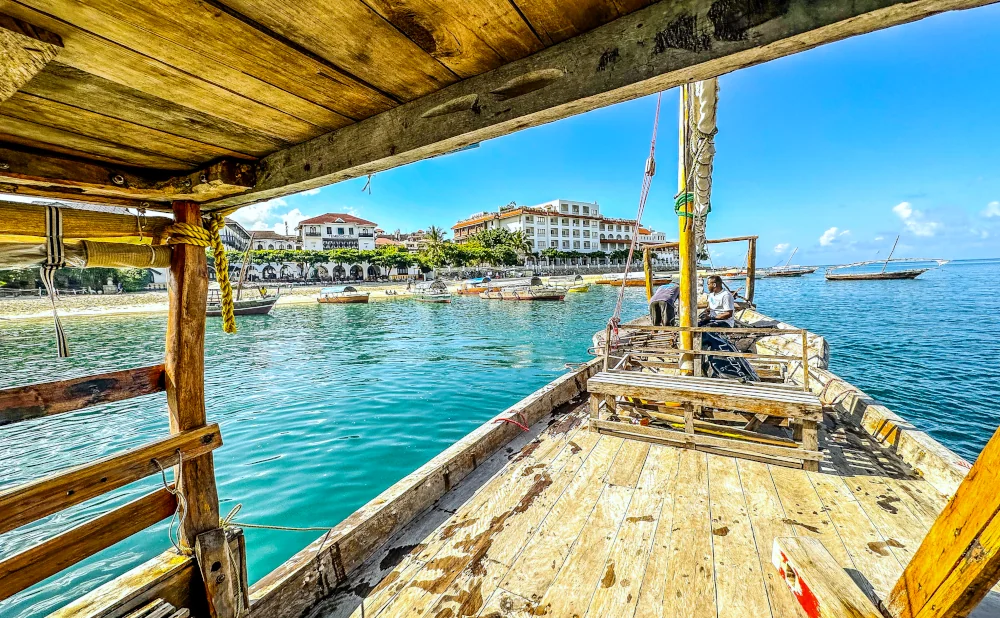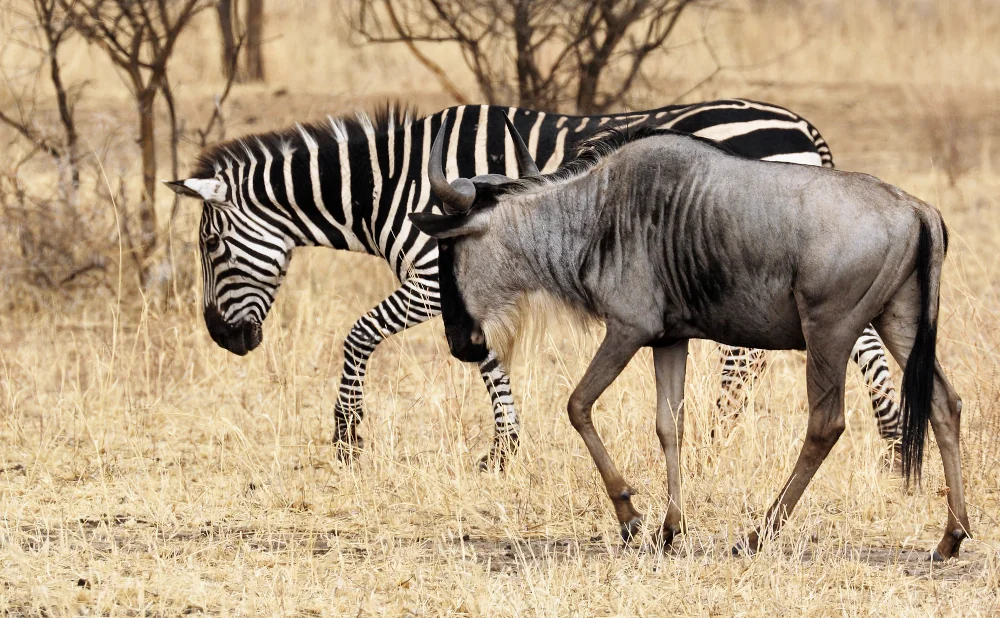how many languages are spoken in tanzania
Tanzania, a country known for its rich cultural tapestry, is a linguistic paradise.
With over 120 languages spoken, it stands as a testament to the country's diverse ethnic mosaic.
Swahili, the national language, is the most widely spoken. It serves as a unifying thread weaving through the nation's multilingual fabric.
English, another official language, plays a significant role in Tanzania's foreign trade, diplomacy, and education.
This article delves into the linguistic landscape of Tanzania, exploring the most prevalent languages and their cultural significance.
Whether you're a language enthusiast, a traveler, or simply curious, join us as we journey through the fascinating world of languages spoken in Tanzania.
The Linguistic Landscape of Tanzania
Tanzania's linguistic landscape is as diverse as its wildlife and geography.
Over 120 languages echo across its plains, mountains, and cities, each with its unique rhythm and cadence.
The Bantu language family dominates, with languages like Chaga, Haya, and Gogo widely spoken. The Sukuma people, Tanzania's largest ethnic group, speak the Sukuma language.
Other language families represented include Nilotic, Cushitic, and Khoisan. The Maasai, a prominent ethnic group, speak Maa, a Nilotic language. The Hadza and Sandawe languages, known for their click consonants, add to the linguistic richness.
This linguistic diversity is a reflection of Tanzania's complex ethnic mosaic, each language a thread in the country's vibrant cultural fabric.
Swahili: The Unifying Language of Tanzania
Swahili, or Kiswahili, is the national language of Tanzania. It's the most widely spoken language, serving as a unifying thread among the country's diverse ethnic groups.
The use of Swahili promotes national unity and is a source of pride for Tanzanians. It's also one of the African Union's official languages, reflecting its regional significance.
The influence of foreign languages, such as Arabic and German, is evident in Swahili. This linguistic fusion mirrors Tanzania's historical interactions and cultural exchanges.
The government of Tanzania encourages the use of Swahili. This policy, coupled with the language's inherent dynamism, creates a vibrant linguistic environment.
English in Tanzania: A Legacy of Colonialism and Modern Necessity
English is another official language in Tanzania. It's a legacy of British colonial rule, but its use today extends beyond historical ties.
In the modern Tanzanian context, English is crucial for foreign trade and diplomacy. It's the language of international business, making it vital for Tanzania's global interactions.
English is also used in higher education and as a medium of instruction in secondary schools. This dual-language approach in education prepares Tanzanian students for both local and global opportunities.
Despite its official status, English is not as widely spoken as Swahili. However, its importance in the spheres of education, business, and international relations underscores its continued relevance in Tanzania.
Indigenous Languages and Ethnic Diversity
Tanzania's linguistic diversity is a reflection of its ethnic mosaic. Over 120 languages are spoken across the country, each tied to a specific ethnic group.
The Bantu language family dominates the linguistic landscape. These languages are spoken by the majority of Tanzania's population.
However, other language families are also represented. These include Nilotic, Cushitic, and Khoisan languages, each with their unique characteristics and speakers.
This rich tapestry of languages contributes to Tanzania's cultural richness and diversity. It's a testament to the country's complex history and vibrant present.
The Bantu Languages
The Bantu languages are the most prevalent in Tanzania. Swahili, the national language, is part of this family.
Other widely spoken Bantu languages include Chaga, Haya, and Gogo. The Sukuma people, Tanzania's largest ethnic group, speak the Sukuma language.
These languages, like all Bantu languages, share certain grammatical and phonetic characteristics. They form a significant part of Tanzania's linguistic identity.
Nilotic, Cushitic, and Khoisan Languages
Nilotic, Cushitic, and Khoisan languages also have a presence in Tanzania. The Maasai, a well-known ethnic group, speak Maa, a Nilotic language.
The Hadza and Sandawe languages, part of the Khoisan family, are notable for their use of click consonants. These languages, though less widespread, add to the linguistic diversity of Tanzania.
Despite their smaller number of speakers, these languages are an integral part of Tanzania's cultural and linguistic heritage.
Language Preservation and Endangered Languages
In Tanzania, some languages face the risk of extinction. These endangered languages are often spoken by small, isolated communities.
Efforts are underway to preserve these languages. Linguistic research and documentation play a crucial role in this process.
The government also supports the teaching of indigenous languages in schools. This helps to ensure that these languages, and the cultural knowledge they carry, are passed on to future generations.
The Role of Language in Tanzanian Culture
Language in Tanzania is more than a means of communication. It is a reflection of the country's rich cultural tapestry.
Each language carries with it a unique set of traditions, stories, and ways of seeing the world. This makes language a key part of cultural identity and community belonging in Tanzania.
From traditional storytelling and oral history to ceremonies and celebrations, language plays a central role in Tanzanian culture.
Language in Education and Policy
Language education in Tanzania has evolved over time. Today, both Swahili and English are taught in schools, reflecting the country's bilingual policy.
The government has implemented policies to encourage the use of Swahili. This is seen as a way to promote national unity and pride.
At the same time, the importance of English in the global economy has led to its continued use in higher education and foreign trade.
Language in Media and Technology
Media and technology play a significant role in the promotion and preservation of Tanzanian languages. Swahili, in particular, has a strong presence in Tanzanian media.
The rise of digital technology has also opened up new opportunities for language preservation. This includes the documentation of lesser-known languages and the creation of digital language resources.
The impact of globalization on the languages spoken in Tanzania is a topic of ongoing research and debate.
Language in Arts and Music
Language and music are closely intertwined in Tanzanian culture. Many songs are written in Swahili, reflecting its status as the national language.
The influence of different languages can also be seen in Tanzanian arts and crafts. This includes the use of traditional scripts and motifs.
The role of language in the Tanzanian music industry and its global influence is a testament to the power of language in shaping cultural expression.
The Future of Languages in Tanzania
The linguistic diversity of Tanzania is a testament to its rich cultural heritage. As we look to the future, the preservation of this diversity will be a key challenge and opportunity.
The role of language in education, media, technology, and the arts will continue to evolve. This will be shaped by factors such as globalization, digital technology, and government policy.
In the end, the languages spoken in Tanzania are more than just words. They are a reflection of the country's history, culture, and identity. They are a bridge to the past and a key to the future.











